Sønderborg’s initiative to reach climate neutrality by 2029 recognized as a “replicable, adaptable and scalable” decarbonization model for cities worldwide. The World Economic Forum’s Centre for Urban Transformation and UN-Habitat has honored ProjectZero with its Award of Distinction for Public-Private Collaboration in Cities in recognition of the positive and measurable impact demonstrated in the city Read more
Danfoss
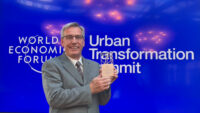
Sønderborg’s initiative to reach climate neutrality by 2029 recognized as a “replicable, adaptable and scalable” decarbonization model for cities worldwide.
The World Economic Forum’s Centre for Urban Transformation and UN-Habitat has honored ProjectZero with its Award of Distinction for Public-Private Collaboration in Cities in recognition of the positive and measurable impact demonstrated in the city of Sønderborg in southern Denmark.
The award ceremony took place yesterday in Detroit, Michigan, USA, as part of the World Economic Forum’s Urban Transformation Summit which brings together visionary leaders from business, government, civil society, media, and philanthropy to forge new partnerships, showcase innovative solutions and mobilize action in support of more sustainable and inclusive cities and urban economies.

ProjectZero was established as a public-private partnership in 2007 with a vision of turning Sønderborg Municipality’s energy system carbon neutral by 2029. The project was initiated by the Bitten & Mads Clausen Foundation, the majority shareholder in Danfoss, Sønderborg Municipality, the University of Southern Denmark, and several local companies, as well as other public and private organizations. Danfoss contributes to ProjectZero by supplying energy efficient cooling and heating solutions, collaborating on electrification projects, and promoting sector integration where industry, energy production, transport, and others work together to reuse energy which has already been produced.
Last month, ProjectZero announced that energy-related carbon emissions have been reduced by 57 percent, equivalent to a saving of around 400,000 tons of CO2. ProjectZero was recognized as a true example of the benefits of the public and private sector coming together.
“ProjectZero provides a model for how the public and private sector can come together to deliver on big, bold ambitions which might otherwise not be possible,” said Jeff Merritt, Head of the World Economic Forum’s Centre for Urban Transformation. “By recognizing this world-leading effort, we hope to encourage and inspire other cities to follow suit, forging new partnerships to accelerate climate action.”
Rick Sporrer, President of the North America Region, Danfoss, accepted the award on behalf of ProjectZero. He said: “ProjectZero is a clear example of what a city can achieve in the way of emissions reductions when public and private organizations team up to find local solutions to a global problem. Cities account for more than 70 percent of annual global carbon emissions and it’s crucial that we learn from each other. A public-private partnership like ProjectZero is replicable, adaptable and scalable for other cities around the world and can help us achieve our global climate goals.”
The ProjectZero model focuses on creating and demonstrating an intelligent and integrated energy system across an entire municipality, offering energy savings. ProjectZero is one of the main reasons that Dr Faith Birol, Director of the IEA, named Sønderborg “the global capital of energy efficiency” at last year’s IEA conference on energy efficiency.
The various sources of energy and sectors connect in a flexible network that works coherently, allowing, for example, houses to be heated by surplus heat from local companies, electric cars can be charged when there is less pressure on energy consumption, and data is used to ensure that energy is efficiently utilized in the best possible way. This model makes it possible to reduce the costs of decarbonization by up to 50 per cent.
In response to ProjectZero receiving the award, Brian Seeberg, CEO, ProjectZero, said: “The strong commitment and collaboration in our partnership is the very backbone of ProjectZero, and the key to reaching zero in 2029. I am therefore very pleased that this award recognizes this unique partnership. Cities around the world can turn to Sønderborg as a blueprint for how to reduce their own emissions. We’ve shown it is possible to make an impact by focusing on three key principles: energy efficiency, sector integration and green energy sources. This is something all cities around the world can and should do.”

Agreement marks another milestone toward commitment to decarbonize operations by 2030 With an eye toward achieving their global decarbonization goals, Danfoss North America recently signed a power purchase agreement with CIG Capital, a U.S.-based project financing firm, to purchase about 75 MW of solar power from a solar farm in Texas, starting in 2025. The Read more
Agreement marks another milestone toward commitment to decarbonize operations by 2030
With an eye toward achieving their global decarbonization goals, Danfoss North America recently signed a power purchase agreement with CIG Capital, a U.S.-based project financing firm, to purchase about 75 MW of solar power from a solar farm in Texas, starting in 2025. The initial agreement term is 12 years, allowing Danfoss to fully replace its annual electricity usage in North America with green energy through at least 2037.
The new agreement will provide Danfoss with green certificates, signifying that they are supplying the North American electrical grid with the full amount of green electricity needed to power all 24 factories and 36 locations in North America, and will reduce Danfoss’ carbon footprint in the region by 75%.

Danfoss Solar project: L to R: Rodney Mumm, head of Danfoss Global Services in North America; Soren Revsbech Dam, Head of ESG, Global Services Real Estate; and Leart Berisa, Category Manager, Global Services are excited to announce the solar power purchase agreement for Danfoss’ North America facilities as part of the company’s ESG commitment.
Soren Revsbech Dam, Head of ESG and Decarbonization, Global Services Real Estate, at Danfoss says: “As part of our ESG goals, Danfoss has committed to achieving carbon neutrality across our global operations by 2030. This agreement to secure green energy for our North America operations will reduce our global emissions by 21%. This is not only a significant step in our journey to becoming carbon neutral, but it also demonstrates that we are serious about putting sustainability at the heart of our business.”
CIG Capital will be building the six square mile farm in the panhandle region of Texas. Groundbreaking is scheduled for November of 2023, with the farm becoming fully operational by the spring of 2025. The solar farm capacity is projected to be 509 MW of solar power, of which Danfoss will utilize 15 percent.
The next focus for Danfoss in its decarbonization journey will be on reducing and reusing energy across its North America locations, employing various Danfoss technologies, such as oil-free, variable-speed compressors and other heating and cooling solutions that support heat recovery and energy efficiency.
Rick Sporrer, President of Danfoss North America says: “Danfoss is committed to playing a leading role in the energy transition. Meeting our ESG goals and living up to our commitment to combat climate change means developing innovative solutions.”
As part of the Science Based Targets initiative (SBTi), Danfoss is committed to become carbon neutral in its global operations (scope 1 & 2) by 2030 and says it will reduce its value chain emissions (scope 3) with 15% by 2030. This commitment is included in the targets of Danfoss’ three step-change initiatives on Decarbonization, Circularity, and Diversity, Equity & Inclusion.
Already Danfoss has seen progress in decoupling environmental impact from business growth by delivering 7% decrease in scope 1 and 2 emissions while growing 15% organically in 2022.
Additionally, the 250,000 sqm Danfoss headquarters campus site in Denmark became carbon neutral in 2022. Carbon neutrality was achieved through energy saving projects, utilization of excess heat from processes and data centers, sourcing of green energy, and offsetting residual emissions.
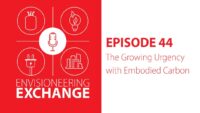
Industry experts in decarbonization and electrification weigh in on heat pump technology Danfoss’ EnVisioneering Exchange podcast series, now in its third season, continues to explore the megatrends shaping our future with a lineup of guests from all facets of the HVACR industry. February’s episodes feature discussions on heat pumps, their role in decarbonization and how Read more
Industry experts in decarbonization and electrification weigh in on heat pump technology
Danfoss’ EnVisioneering Exchange podcast series, now in its third season, continues to explore the megatrends shaping our future with a lineup of guests from all facets of the HVACR industry. February’s episodes feature discussions on heat pumps, their role in decarbonization and how the industry and policymakers can encourage their adoption.
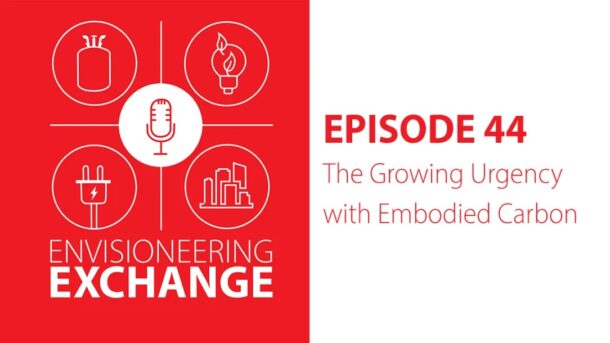
In “The Role of Heat Pumps in Decarbonization,” released on February 2, Steve Nadel, executive director of American Council on an Energy-Efficient Economy (ACEEE), discusses the barriers to heat pump adoption, particularly in buildings. He emphasizes the importance of educating both consumers and contractors on the value of heat pumps and financial incentives for building owners, as well as the need for new technologies that increase heat pump effectiveness in colder climates.
In “Clearing the Hurdles to Heat Pump Adoption,” released on February 20, Ron Domitrovic, program manager for the Electric Power Research Institute (EPRI), addresses some of the heat pump technologies on the horizon and what policies are needed to increase adoption. He notes that variable-speed heat pumps, powered by variable-speed compressors, have helped make heat pumps more effective and efficient in colder climates, but the technology needs to continue to evolve to make it cost-effective to retrofit existing buildings with heat pump systems. Increasing adoptions also requires educating contractors and suppliers on the benefits of heat pumps and options for installation.
All EnVisioneering Exchange podcasts can be accessed on SoundCloud and Danfoss’ EnVisioneering Solutions blog, and are posted on Danfoss LinkedIn and Twitter.
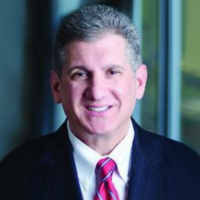
Former Maryland government official brings industry expertise to Danfoss Danfoss is pleased to announce that Steven Lakin has joined the company as its new director of public and industry affairs. Lakin, who began his new role on May 16, is an accomplished government relations and public affairs professional with extensive experience working across multiple industries Read more
Former Maryland government official brings industry expertise to Danfoss
Danfoss is pleased to announce that Steven Lakin has joined the company as its new director of public and industry affairs. Lakin, who began his new role on May 16, is an accomplished government relations and public affairs professional with extensive experience working across multiple industries, with industry associations, and with policymakers at the state and federal level.
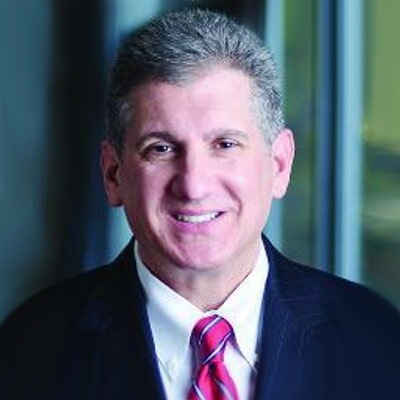
Steven Lakin is Danfoss’ new director of public and industry affairs.
Most recently, Steven was the deputy commissioner of labor and industry for the State of Maryland (2016-2022). Previously, he served in leadership roles for several contracting associations and worked for two members of Congress, two governors and one U.S. president.
“I am excited to join Danfoss and bring my experience in both the public and private sector,” said Lakin. “Danfoss is an industry leader in energy efficiency and sustainable technologies and I look forward to working with key industry and government stakeholders at this critical junction where innovations in climate and sustainable solutions are gaining momentum in our national conversation.”
Steven has a bachelor’s degree in political science with a minor in communications from the University of Florida.
